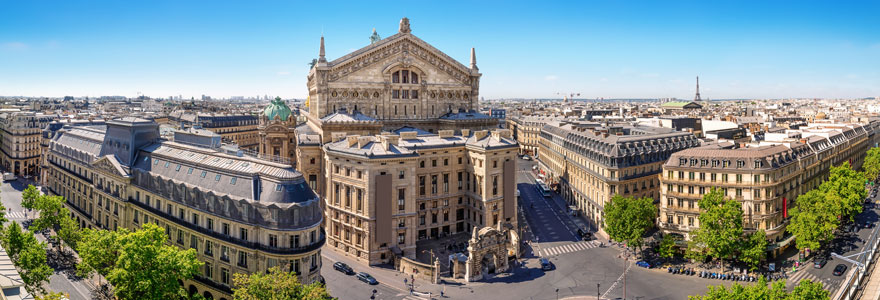
France has long been renowned for its fashion, wine and cuisine. Now, it seems, the country's architectural touch is being exported internationally.
In recent years, France has seen a growing number of its architects being commissioned to work on projects abroad, particularly in the Middle East.
One of the most notable examples is the Louvre Abu Dhabi, which was designed by French architect Jean Nouvel. The museum, which opened in 2017, was built in collaboration with the Abu Dhabi Tourism & Culture Authority.
Other French architects who have worked on projects in the Middle East include Dominique Perrault, who designed the Dubai Opera House, and Jean-Philippe Vassal, who is behind the Qatar National Library.
The trend is not just limited to the Middle East, either. French architects are also increasingly being sought after in Asia and Africa.
One of the reasons for this is that French architects are seen as being able to strike a balance between tradition and modernity. Their work often makes use of traditional materials and techniques, while also incorporating contemporary elements.
This ability to combine the old and the new is something that is highly valued in many parts of the world, where there is a growing demand for modern architecture that still pays homage to local culture and traditions.
So, it seems, the French architectural touch is in high demand internationally. Who knows where it will pop up next?
Architecture is a central element in the construction of a country's identity
When thinking about the architecture of a country, it is easy to see how it can be a central element in the construction of that country's identity. The French have a very distinct architectural style that has been exported all over the world. From the Eiffel Tower to the Louvre, French architecture is easily recognizable and has played a big role in shaping how the world views France.
French architecture is characterized by its ornate designs and use of intricate details. This is best seen in the many cathedrals and castles that dot the country. Even more modern buildings have a distinctly French flair, with curved lines and intricate facades. More about french architecture on Atelier Architecture Croisette.
This attention to detail and love of beauty is something that is deeply ingrained in French culture. It is no wonder then that architecture is such an important part of the country's identity. Everywhere you go in France, you will see evidence of the country's rich architectural history. From the grandiose buildings in Paris to the more humble structures in the countryside, each one contributes to the unique character of France.
France, a playground for foreign architects?
When it comes to architecture, France has always been a step ahead of the rest of the world. Foreign architects have long been inspired by the country's unique style and flair. From the grandiose chateaux of the Loire Valley to the modernist masterpieces of Le Corbusier, France has always been a playground for foreign architects.
In recent years, however, the French architectural touch is being exported internationally. French architects are increasingly being commissioned to design buildings in other countries. This is partly due to the growing popularity of French architecture, but it is also a reflection of the high quality of French architects.
Some of the most notable recent examples of French-designed buildings abroad include the National Museum of Qatar, the Louvre Abu Dhabi, and the Museum of Islamic Art in Doha. These buildings are all striking examples of contemporary architecture, and they show how the French architectural touch is being applied to new contexts.
There is no doubt that French architects are in high demand internationally. With their unique style and flair, they are able to bring a touch of elegance and sophistication to any project. Whether it is a new museum or a simple office building, French architects are sure to leave their mark on the world.
How would you describe French architecture?
French architecture is characterized by an elegant, formal style that often incorporates detailed stone carving and ornate ironwork. French architects also frequently employ tall, vertical windows and grandiose staircases in their designs. Many famous French buildings, such as the Louvre and Notre Dame Cathedral, are immediately recognizable for their unique architecture.
In recent years, the French architectural touch has been exported internationally, with French architects designing everything from skyscrapers in Asia to museums in the United States. While the French style is often adapted to fit the local climate and culture, it always retains its essential elegance and grandeur. French architecture is truly world-renowned, and its influence can be seen in buildings all over the globe.
What makes French architecture unique?
When it comes to architecture, the French have a certain je ne sais quoi that has been exported all over the world. From the grand Châteaux of the Loire Valley to the more understated elegance of Parisian apartments, there is a certain je ne sais quoi to French architecture that is hard to define but easy to spot.
Some attribute it to the French focus on proportion and symmetry, as well as a certain lightness and airiness that comes from the use of delicate ironwork and glass. Others say it is the result of centuries of refinement, as the French have been perfecting their architectural style for longer than any other nation.
Whatever the reason, there is no denying that French architecture has a certain je ne sais quoi that sets it apart from the rest of the world. And as more and more architects look to the French for inspiration, it is clear that this je ne sais quoi is here to stay.
The article discusses how the French architectural touch is exported internationally. It notes that while the style is popular in many places, it is not always well understood. The article concludes by noting that while the style may not be universally loved, it is certainly influential.